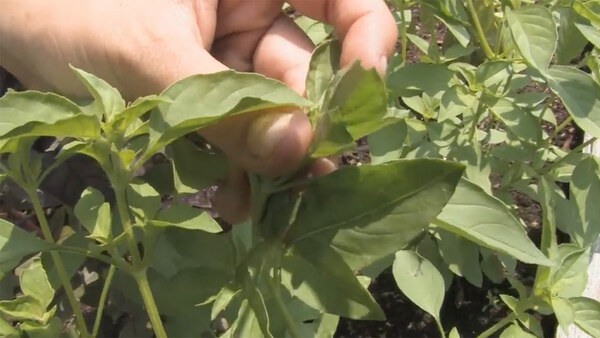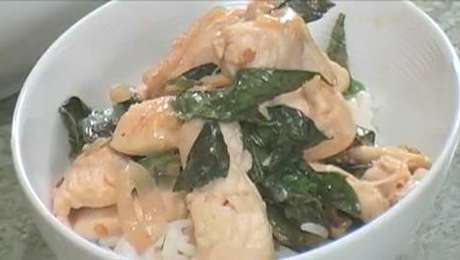Welcome to Homegrown/Homemade, a video series from FineGardening.com and our sister site FineCooking.com. We’ll be following a gardener (Danielle Sherry) and a cook (Sarah Breckenridge) as they plant, maintain, harvest, store, and prepare food crops. Basil is prized by cooks all over the world, and there are many varieties to choose from. For this year’s garden, Sarah has selected Genovese basil, opal basil, lemon basil, lime basil, and Thai basil. In this episode, we cover preserving and storing. Luckily, a food processor and freezer are all it takes to keep fresh basil well past the growing season.
Episode 3: How to Preserve and Store Basil: Pesto
Fresh basil wilts and loses its color and fragrance and aroma soon after harvesting. If you aren’t going to use it right away, there are several ways you can prolong its life. Basil springs in a jar of cold water will keep for a couple of days. If you cover the springs with a plastic bag, the sprigs will keep from three to five days in the fridge. You can also prepare a pesto with 3-3/4 ounces (5 packed cups) washed and dried basil leaves, 1/4 cup pine nuts, 1 large clove garlic, and some salt and pepper. Chop these ingredients into a food processor, then drizzle in 1/2 cup extra-virgin olive oil while the motor is running. Last, stir in 1 ounce (1 cup if rasped, 1/2 cup if grated with a box grater) grated Parmesan cheese by hand. This mixture can be stored for about three days in the fridge in a container with an airtight lid. Before sealing, drizzle more olive oil over the mixture to cover the mixture and form a seal, preventing oxidation. For longer-term storage, freeze your pesto in an ice-cube tray. Transfer the frozen cubes to a plastic freezer bag, and store in the freezer until you need them.
Episode 1: How to Plant Basil
All basil varieties grow well in full sun in rich, well-drained soil. Basil loves hot weather, so don’t plant it too early. For best results, wait until the night temperature is at least 65°F. Mix in some compost, and space the plants about 1 ft. apart, then water. Basil doesn’t need a lot of fertilizer as it grows; in fact, too much fertilizer adversely affects the flavor.
Episode 2: How to Prune (and Harvest) Basil
Basil loves hot weather, and if your plants are flourishing, it’s time to prune (and harvest). With basil, pruning and harvesting are essentially the same thing. It’s a win-win situation for you and for the plant. When you pinch back the stems to the next leaf cluster, you keep the plant from getting leggy and stimulate new growth. You can take the trimmings back to the kitchen and use them for pesto. Don’t prune more than one-third of the plant at one time, even if it means postponing your pesto meal for a week or two.
Check your basil plants frequently for flowers, and if you see any, pinch them off right away. If the flower stems are too woody to pinch (often the case with Thai basil), cut them off with shears. A plant allowed to flower will soon go to seed, stop growing, and die, so be vigilant about removing flowers.
In wet, cool weather, basil may be prone to powdery mildew, a fungal problem which can be treated with a backing soda solution or an organic fungicide.
Cooking with Basil: Thai Stir-Fried Chicken with Basil
When you cook with any kind of basil, add it at the very end, because heat destroys the volatile oils that give basil its aroma and flavor. Here’s a quick-to-make dish that shows off the licorice-like flavor of Thai basil. For stir-frying prep all the ingredients before you begin. Heat vegetable oil in a skillet, and once it starts to shimmer, you’re ready to begin. Shallots, garlic, and red pepper flakes go first, followed by thinly sliced strips from chicken cutlets. Cook until the chicken loses its pink color, then make a sauce with water, fish sauce, lime juice, and brown sugar. When the sauce cooks down, it’s time to turn off the heat and add the basil leaves. Serve over rice. Get the full recipe for this dish on FineCooking.com.



















Comments
Log in or create an account to post a comment.
Sign up Log in